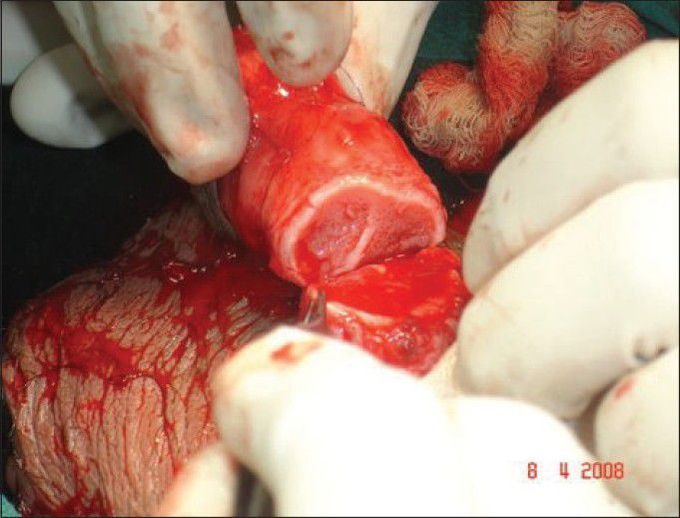


Successful Multidisciplinary Approach Salvaged Self-Amputated Penis
A 24-year-old male, known case of schizophrenia, presented to ER with penile self-amputation. During an episode of paranoid schizophrenic delusion, the patient cut his penis with utility knife. The case was received by plastic surgery and urology department. Emergency procedures were carried out to reimplant the penis. Percutaneous suprapubic catheter was inserted to facilitate voiding. The proximal part of penis as well as the distal amputated part were debrided. The cut ends of urethra were spatulated and re-anastomosed on Foley’s catheter with absorbable sutures after mobilization. The neurovascular bundle and dorsal artery were also mobilized and subsequently re-anastomosed. Corpora were re-attached by absorbable sutures. After grafting, the patient developed complications as a result of reperfusion injuries; the complications included ecchymosis, edema, and mild necrosis along the incision line. However, the perfusion was maintained resulting in successful grafting. The patient was simultaneously treated for psychiatric condition. Patient was discharged after 2 weeks; however, the Foley’s catheter and suprapubic tube were left in place for 10 weeks. A voiding cystourethrogram demonstrated a patent urethra with no strictures. Partial erection and penile sensations started to develop by the time voiding cystourethrogram was performed. Despite total ischemic time of approximately 4 to 5 hours, penile grafting was successful attributed to timely intervention by multi-disciplinary approach. Reference https://www.thieme-connect.com/products/ejournals/abstract/10.1055/s-0037-1602792 Image via https://indianjurol.com/article.asp?issn=0970-1591;year=2010;volume=26;issue=3;spage=434;epage=437;aulast=Gyan;type=3

